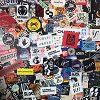Live now
Personalised Recommendations
Sign up or log in to MY NTS and get personalised recommendations
Wonderfeel

Wonderfeel
Wonderfeel has been played on NTS shows including Elena Colombi, with Tamadaa first played on 29 January 2018.
Peter Siahna Wadham AKA Peet AKA Peter Rabbit is an Australian musician.
He started with standard flute, then moved to punk flute in 80s activist band Insyte and moved to analogue and digital electronica around 1986. His approach is rigorous, almost scholarly in that it combines deep personal exploration with musical and technical research.
Peet's practice has evolved considerably over the years. Peet's work is grounded in deep personal expression, thematic explorations of ideas, which have shifted from politics to spirituality, and always accompanied by musical and technical…
READ MORE
SUGGEST EDIT
Thanks!
Your suggestion has been successfully submitted.
MOST PLAYED TRACKS
